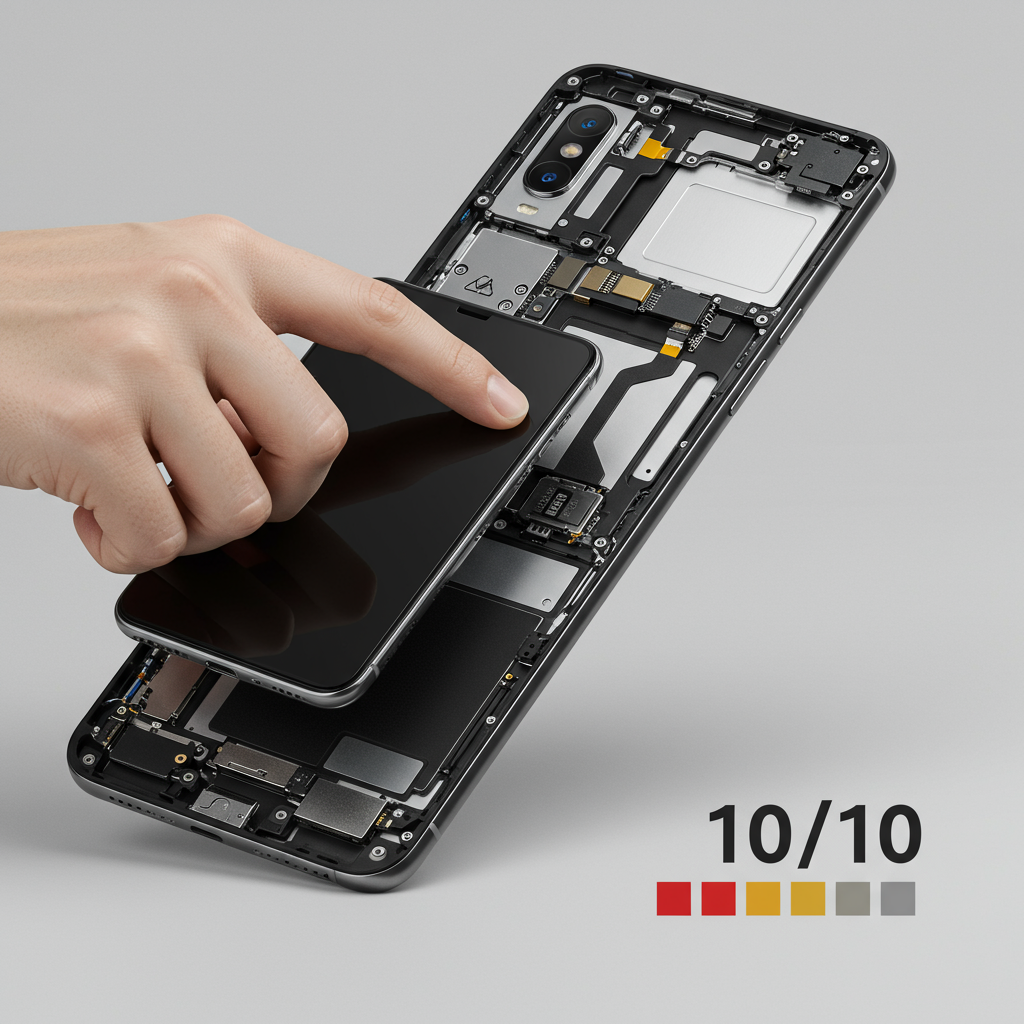The ethical tech innovator fairphone is making headlines again, demonstrating its unwavering commitment to longevity and sustainability. Its latest device, the Fairphone 6, has achieved a perfect 10 out of 10 repairability score from the experts at iFixit. This isn’t just a high mark; it places the Fairphone 6 in an elite category. It’s the fifth consecutive Fairphone model to receive this top rating in iFixit’s rigorous teardown tests, a feat unmatched by any other phone manufacturer globally. For consumers seeking a phone designed to last, this perfect score is a powerful indicator of the Fairphone 6’s core philosophy.
A Design Philosophy Rooted in Repair
Fairphone, a pioneering Dutch company, has built its reputation on creating consumer electronics that are kinder to both people and the planet. The Fairphone 6 embodies this mission fully. While being smaller and about 9 percent lighter than its predecessor, it doubles down on modularity and ease of repair. The design actively encourages users to fix their own devices, extending their lifespan and reducing electronic waste. This stands in stark contrast to the trend of sealed, difficult-to-repair modern smartphones.
Easy Access, Minimal Tools
Getting inside the Fairphone 6 is surprisingly simple. You don’t need a specialized kit or dangerous adhesives. The entire phone utilizes a single standard tool: a T5 Torx screwdriver. Even swapping out the battery, a component often designed for difficult or expensive replacement in other phones, is straightforward. It requires removing just seven small screws to access the power cell.
Battery Swaps Made Simple
While previous Fairphone models featured tool-free battery access, the Fairphone 6 adopts a slimmer soft-pouch battery design for a more svelte profile. This change necessitates securing the battery with screws. However, Fairphone itself has demonstrated that a battery swap from shutdown to reboot takes approximately two minutes. This remains dramatically simpler and faster than swapping a battery in virtually any other modern smartphone.
Beyond the Battery: Replacing Key Components
The modular design extends far beyond the battery. Almost every key component in the Fairphone 6 is designed for minimal-effort replacement by the user. You can swap out the USB-C port, camera sensors, and even the display with ease. The only significant use of glue is on the mainboard, which is one of the few repairs Fairphone doesn’t recommend users attempt themselves. This modularity means that a cracked screen or a faulty charging port doesn’t spell the end for the device.
Parts and Accessories
Supporting this repair-friendly approach, replacement parts will be readily available directly from Fairphone and also through iFixit. This ensures users can easily acquire the components they need for self-repairs. Furthermore, the Fairphone 6 features a replaceable backplate that supports a line of modular accessories. This includes items like a lanyard or a card wallet, similar to concepts seen on other modular-focused devices.
Balancing Repairability with Durability
Designing a phone for easy disassembly using screws rather than strong adhesives presents a challenge for environmental sealing. The Fairphone 6 achieves an IP55 rating for dust and water resistance. While this isn’t the highest rating on the market (many flagships boast IP68), iFixit considers it impressive given the screw-sealed construction. It means the phone can withstand splashes or jets of water, a necessary trade-off for its exceptional repairability.
Unprecedented Long-Term Support
Fairphone backs its hardware commitment with industry-leading software support. The company guarantees an extraordinary seven years of Android OS updates. This is coupled with eight years of security patches, extending support well into 2033. This long-term software commitment, along with a five-year warranty and a loyalty program that rewards users for keeping and repairing their phones, creates a compelling package focused on longevity and reducing the upgrade cycle.
The Fairphone Compromise: Specs vs. Sustainability
Achieving this level of repairability and long-term support involves making deliberate choices elsewhere. iFixit and reviewers note that the Fairphone 6 doesn’t aim to be a bleeding-edge flagship device. Its technical specifications reflect a focus on sustainability and user repairability over raw performance.
What to Expect (and What Not To)
The dual rear camera setup, featuring 50MP main and 13MP ultrawide sensors, is functional but fairly basic compared to competitors in a similar price range. It’s a step down from the Fairphone 5, which had 50MP on all cameras. The Qualcomm Snapdragon 7S Gen 3 chipset provides capable performance for daily tasks but isn’t a powerhouse for demanding games or intensive applications. The USB-C port is limited to the slower USB 2.0 standard. However, the 6.3-inch 10-120Hz LTPO OLED display is a notable positive, offering smooth visuals and good quality. These compromises are seen as necessary trade-offs for the core mission of creating a long-lasting, repairable device.
Market Position and Availability
The Fairphone 6 is available now in Europe for €599 from Fairphone and other retailers. Its pricing puts it in competition with many mid-range to upper-mid-range smartphones that often offer higher performance specs. In the United States, the availability is more limited. The Fairphone 6 is available exclusively through Murena for $899. The US version ships running /e/OS, Murena’s privacy-focused, de-Googled version of Android. Preorders were open in the US, with shipping expected in August.
Facing the Challenge of Longevity
Despite its ethical stance and technical achievements in repairability, Fairphone faces a significant business challenge. The company has reported flat sales of around 100,000 units annually. This is a tiny fraction compared to major players like Apple, which sells tens of millions of phones in a single quarter. Analysts like Jan Stryjak from Counterpoint note that while Fairphone is unparalleled in sustainability, it remains a niche product. Price and brand recognition typically drive phone purchases, and the Fairphone 6 faces stiff competition from cheaper, more powerful alternatives from established brands.
Shifting the Message
Under new CEO Raymond van Eck, appointed in August 2024, Fairphone is implementing a new strategy to quadruple its addressable market within five years. This involves shifting the marketing message to focus more on the tangible benefits of the device itself – such as its durability and status as “the last phone that they’ll have to buy for a while” – rather than solely emphasizing the ethical mission. The company aims for a less “preachy” image, introducing features like a ‘Fairphone Moments’ switch for a minimalist experience and even including Google’s Gemini AI in the Fairphone 6, viewing it pragmatically within the industry context.
The Paradox of Success
Fairphone’s core mission is to build phones that users keep for many years. This directly counters the planned obsolescence model prevalent in the tech industry. If Fairphone succeeds in making phones truly last, it inherently limits the need for repeat purchases and frequent upgrades, making significant growth challenging once the environmentally conscious niche market is saturated. However, external pressures, such as the EU’s Ecodesign Directive mandating longer software support and improved repairability (effective June 2024), suggest the industry is slowly moving towards Fairphone’s long-term vision, potentially validating their approach over time.
Frequently Asked Questions
How easy is it to repair the Fairphone 6 yourself?
Repairing the Fairphone 6 is designed to be very easy for users. It requires only a single standard tool, a T5 Torx screwdriver, to access most components. Key parts like the screen, battery, USB-C port, and camera sensors are modular and can be replaced with minimal effort. Fairphone and iFixit will sell replacement parts, enabling straightforward self-repairs that significantly extend the phone’s life.
Where can you buy the Fairphone 6, especially in the US?
In Europe, the Fairphone 6 is available directly from Fairphone’s online store and other European retailers for €599. For customers in the United States, availability is exclusive through Murena, where it is priced at $899 and ships with the privacy-focused /e/OS operating system. Preorders for the US market were open with shipping expected in August.
What are the main compromises when choosing the Fairphone 6?
Choosing the Fairphone 6 means prioritizing repairability, longevity, and ethical production over cutting-edge performance or durability features found in some flagship phones. The compromises include a mid-range processor (Snapdragon 7S Gen 3), a basic camera setup (50MP main/13MP ultrawide), a slower USB 2.0 port, and a limited IP55 water and dust resistance rating. These trade-offs are made to facilitate the phone’s easy repairability and long-term sustainability goals.
A New Standard for Smartphones?
The Fairphone 6 reinforces Fairphone’s position as the leader in repairable and sustainable smartphones. Its perfect 10/10 iFixit score, combined with extensive software support and warranty, presents a compelling alternative for consumers tired of the upgrade treadmill. While it involves compromises on raw performance and external durability compared to sealed flagships, its core value proposition – a phone built to last and be easily fixed – resonates strongly with a growing segment prioritizing environmental responsibility and long-term value. Its success may ultimately hinge on its ability to broaden its appeal beyond a dedicated niche market.




